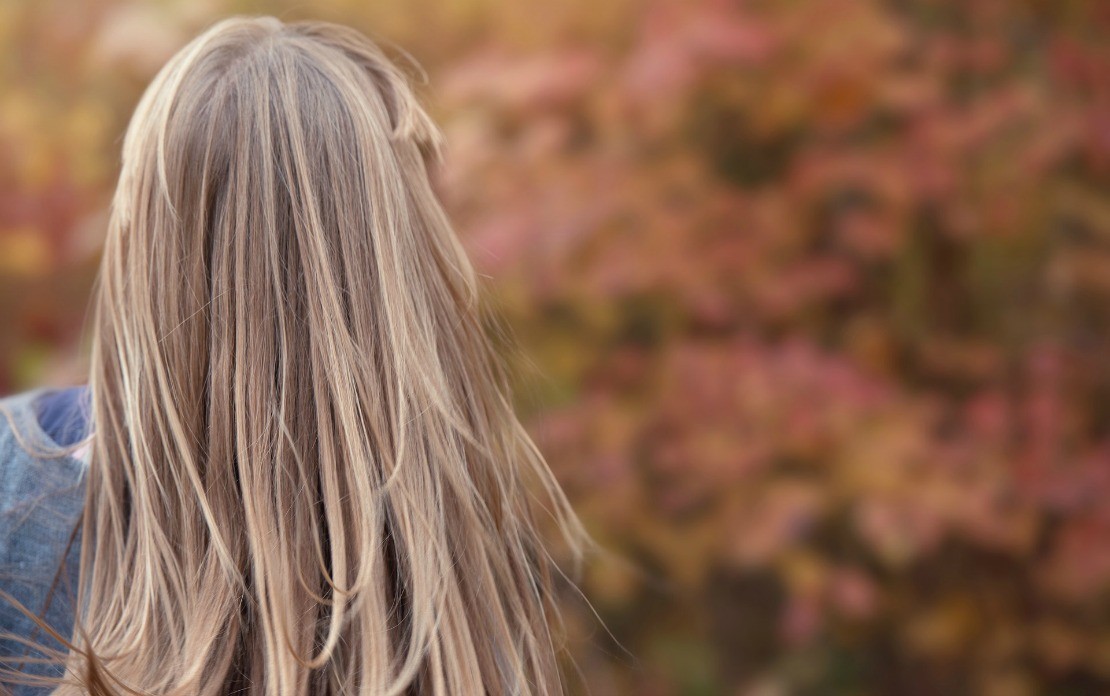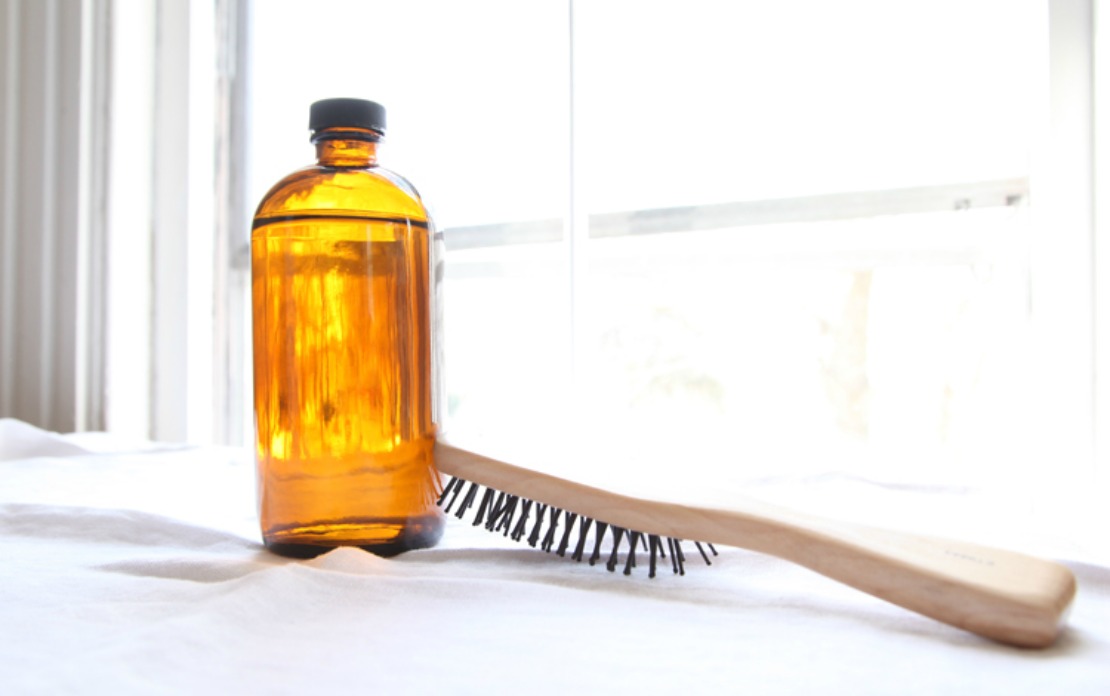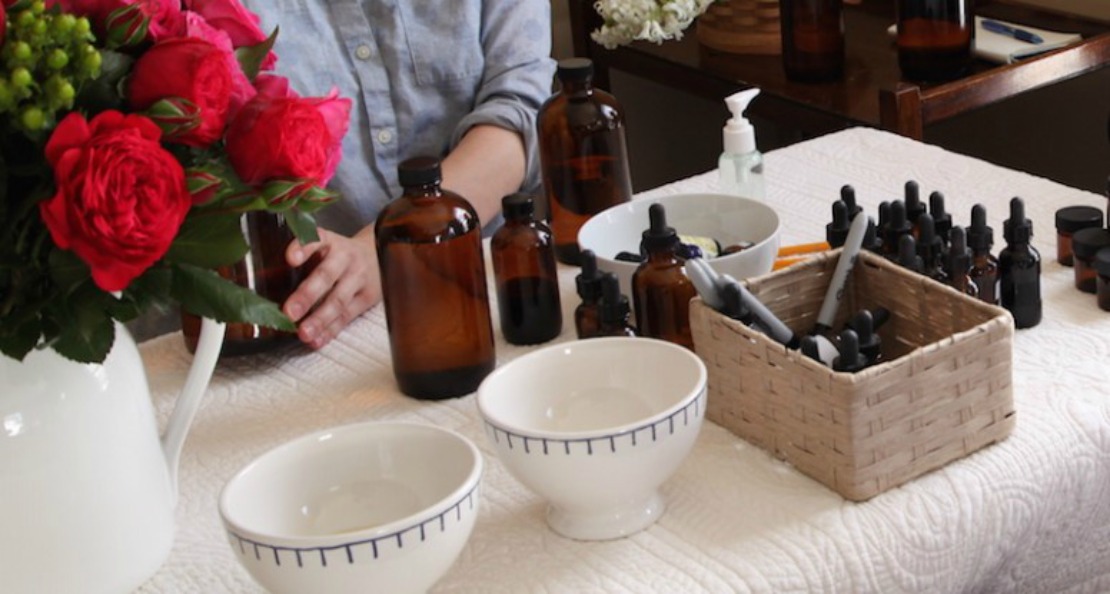
How To Use Essential Oils For Hair Care
As you walk down the drugstore aisle, you can be overwhelmed with the number and variety of hair care products. Their costs range from very inexpensive to an amount that would rival the gross national product of some countries.
However, if you look closely, you will notice that the ingredients contain some startling similarities. Water is often a main ingredient in shampoos and conditioners. Water? Yes, you are paying for more water. Actually, water is the primary solvent, making it a very important ingredient. After that, though, you can run into common ingredients that are not so nice such as sodium laureth sulfate (SLES) and sodium lauryl sulfate (SLS). These inexpensive, synthetic chemicals are used as surfactants and detergents, which help with emulsifying the hair care product ingredients, wetting your hair, producing lather, and making everything work together. While the Environmental Working Group’s (EWG) Skin Deep Cosmetics Database puts both of these ingredients in a low risk category, their safety is controversial. Plus, both of these chemicals are synthetic, which means there is an environmental impact caused by their manufacturing as well.
Additionally, most hair care products will also contain artificial stabilizers and preservatives, as well as artificial fragrances. We have all read how some of these synthetic chemicals can cause skin irritation and allergic reactions or worse.
A More Natural Approach Is Possible
It is quite possible to take a more natural approach to hair care. There are companies that sell shampoos and conditioners that do not contain some of these irritating chemicals, as well as companies that sell bulk shampoo and conditioner, to which you can add your own fragrances. You may still need to watch out for any given individual ingredient you are trying to avoid in each of these cases.
There are several vegetable or fixed oils that can be very useful in your hair care routine. Coconut, jojoba, argan, hemp seed, sesame, tamanu, shea, avocado and camelina can all play roles in maintaining beautiful, glossy tresses.
It’s even possible to make some simple hair care products from scratch at home. You can peruse DIY cosmetics books from your local library or surf the Internet to find lots of recipes to make your shampoo and conditioner bases. The Herbal Academy has an article on using soapwort to make your shampoo and body wash here. You may wish to give your hair a final herbal vinegar rinse with an idea from this post.
How To Use Essential Oils For Hair Care
Whether you buy a hair product base or create your own, you will be considering the purpose of your hair product, such as dandruff control, moisturizing dry hair, or counteracting hair loss, as well as looking for a pleasing fragrance. This is where essential oils for hair care can really help.
Remember that essential oils are not oily like vegetable or fixed oils. They are called “oils” because they are lipophilic or fat-loving and dissolve readily in fatty liquids, but they are not made of lipids. This means that when using essential oils for hair care, they cannot moisturize your hair, nor will they make your hair oily. As a matter of fact, if your essential oils are pure, they may actually be quite drying and will evaporate more quickly than when applied by themselves. This is one of the big reasons why we dilute essential oils in fatty oils and butters before applying them to our skin.
However, essential oils for hair care can be especially effective in the cases of hair loss or dandruff. De Valois (2004) performed a case study using essential oils to treat scalp eczema. Other researchers have used various essential oils to treat dandruff, alopecia, and head lice. Abstracts for several of these studies are listed in the resources below.
Essential oils for hair care recommended in the literature include the following:
| Purpose | Essential Oil | References |
| General | Anise seed, chamomile (Roman or German), citronella, sage, lavender, lemon, clary sage, sandalwood, rosemary both ct. 1,8 cineole and verbenone, peppermint, spearmint, tea tree | Rose, 1992
Hargis, 2015 |
| Dandruff | Rose geranium, rosemary, lemon, Atlas cedar, Himalayan cedar, juniper berry, tea tree, Eucalyptus (1,8 cineole types), cypress, Lemon-scented gum (Eucalyptus citriodora), patchouli | Rose, 1992 Hargis, 2015 Pressimone, 2015 |
| Hair growth | Angelica (especially if hair loss is hormone-related), basil, black pepper, clary sage, rosemary, sage, ylang ylang, Virginia cedarwood, lavender, nutmeg, thyme ct. linalool, vetiver, Roman chamomile, sandalwood, lemon, peppermint | Rose, 1992
Oh, et. al., 2014 Hargis, 2015 Pressimone, 2015 |
| Oily hair | Cypress, lemongrass, sage, rose geranium, clary sage | Rose, 1992
Hargis, 2015 |
| Dry hair | Rose geranium, sandalwood | Rose, 1992 |
| Lice | Eucalyptus globulus, spearmint, clove, thyme ct. thymol, tea tree, citronella, cassia | See recommended resources PLEASE NOTE: Be sure to check safety for these EOs in particular. |
Choosing Essential Oils For Hair Care Products
The essential oils (EO) you choose for your hair care may address serious hair and scalp issues, such as those in the table above, but you may also have other reasons for choosing particular essential oils. Essential oils are famous for their antifungal and antibacterial action, so you might choose certain EOs to address a fungal or bacterial infection on the scalp.
EOs can also address emotional concerns so you may choose a fragrance that brings back lovely memories or makes you feel like singing in the shower. You can also choose EOs simply for their fragrance, although I would warn you that if you are going to choose floral essential oils or absolutes, use a very light hand in blending them. It is very easy to use too much, as the floral EO aromas are particularly potent. In some cases one drop per ounce of product base is enough.
Peppermint EO can make your scalp tingle, making it a fun EO to include in your shampoo or scalp recipes. As with the floral EOs, use a small amount, 1% or less, or the tingle can become uncomfortable. You may use more, as you are able, up to 3%.

Essential Oil Hair Care Recipes for Thinning Hair
This is a very heavy conditioning recipe for thinning hair where both the hair itself is getting thinner and weaker and hair density is decreasing. Use very small amounts rubbed between your hands and then on the scalp and hair. As they say, “A little dab will do ya!”
Essential Oil Blend for Thinning Hair
Use at a (3% dilution).
1 ounce jar
0.75 ounce unrefined, virgin coconut oil (Use a refined version for less aroma)
0.25 ounce jojoba wax
4 drops palmarosa EO
3 drops balsam copaiba EO
4 drops lemon EO
2 drops rosemary cr. 1,8 cineole EO
1-2 drops peppermint EO (optional)
- Whip ingredients together until light and fluffy.
- Apply a very small amount to hair and scalp before shampooing. Leave on 15-20 minutes before shampooing as usual. May also use a very small amount as a leave-in conditioner.
Simple Thinning Hair Shampoo Recipe
Essential Oils
Shampoo or Conditioner
- Add 25 drops rosemary ct. 1,8 cineole or peppermint, or a combination of rosemary and peppermint to a 16 ounce bottle of shampoo.
- Add 1 drop of geranium EO to your dollop of shampoo or conditioner as you use it.
Notes of Essential Oil Safety
When using essential oils for hair care be sure to check the safety of any essential oils you select for your products.
- Try to avoid getting these products in your eyes, but if this happens, be sure to rinse well with clear water until the stinging has stopped.
- General dilutions to consider for shampoo and conditioner would be 1-5%.
- Even though you rinse off most hair care products, I recommend you use a maximum of 4 drops total of all citrus or phototoxic oils per ounce of hair care product to avoid the potential of a phototoxic reaction on your scalp.
Recommended Resources
- EWG’s Skin Deep Cosmetics Database for:
Sodium Lauryl Sulfate
Sodium Laureth Sulfate - The Complete Aromatherapy & Essential Oils Handbook for Everyday Wellness, by Nerys Purchon and Lora Cantele has a section dedicated to hair care.
- 375 Essential Oils and Hydrosols, by Jeanne Rose
- Aromatherapy: Essential Oils for Vibrant Health and Beauty, by Roberta Wilson
- Alopecia:
General: https://www.ncbi.nlm.nih.gov/pubmed/9828867
Rosemary EO: https://www.ncbi.nlm.nih.gov/pubmed/25842469 - Dandruff:
Lemongrass EO: https://www.ncbi.nlm.nih.gov/pubmed/26566122 and https://www.ncbi.nlm.nih.gov/pubmed/21710859
Tea tree EO: https://www.ncbi.nlm.nih.gov/pubmed/12451368 - Lice:
Eucalyptus globulus: https://www.ncbi.nlm.nih.gov/pubmed/27905627
Spearmint (and others): https://www.ncbi.nlm.nih.gov/pubmed/27112758
Clove (eugenol & beta-caryophyllene): https://www.ncbi.nlm.nih.gov/pubmed/26864790 and https://www.ncbi.nlm.nih.gov/pubmed/20496586
Thyme: https://www.ncbi.nlm.nih.gov/pubmed/26462802
Tea tree (and others): https://www.ncbi.nlm.nih.gov/pubmed/21864348, https://www.ncbi.nlm.nih.gov/pubmed/20727129, https://www.ncbi.nlm.nih.gov/pubmed/25296426, and http://link.springer.com/article/10.1007%2Fs00436-012-3045-0
Geranium EO: https://www.ncbi.nlm.nih.gov/pubmed/22493851
Appendix: Botanical Names for Essential Oils Mentioned
| Angelica (Angelica archangelica) | Lavender (Lavandula angustifolia) |
| Anise seed (Pimpinella anisum) | Lemon (Citrus limon) |
| Balsam copaiba (Copaifera officinalis) | Lemon-scented gum (Eucalyptus citriodora) |
| Basil (Ocimum basilicum) | Lemongrass (Cymbopogon citratus or Cymbopogon flexuosus) |
| Black pepper (Piper nigrum) | Nutmeg (Myristica fragrans) |
| Cassia (Cinnamomum cassia) | Palmarosa (Cymbopogon martinii) |
| Cedarwood, Atlas (Cedrus atlantica) | Patchouli (Pogostemon cablin) |
| Cedarwood, Himalayan (Cedrus deodara) | Peppermint (Mentha x piperita) |
| Cedarwood, Virginian (Juniperus virginiana) | Rose geranium (Pelargonium roseum) |
| Chamomile, German (Matricaria recutita) | Rosemary (Rosmarinus officinalis) ct. 1,8 cineole or ct. verbenone |
| Chamomile, Roman (Chamaemelum nobile) | Sage (Salvia officinalis) |
| Citronella (Cymbopogon nardus) | Sandalwood (Santalum spicatum or other sustainable sandalwood) |
| Clary sage (Salvia sclarea) | Spearmint (Mentha spicata) |
| Clove (Eugenia caryophyllata) | Tea tree (Melaleuca alternifolia) |
| Cypress (Cupressus sempervirens) | Thyme (Thymus vulgaris) ct. linalool (Sweet Thyme) or ct. thymol (Red Thyme) |
| Eucalyptus (Eucalyptus globulus, E. radiata) | Vetiver (Vetiveria zizanoides) |
| Geranium (Pelargonium x asperum) | Ylang ylang (Cananga odorata) |
| Juniper berry (Juniperus communis) |

REFERENCES
De Valois, B. (2004). Using essential oils to treat scalp eczema. The International Journal of Aromatherapy, 14, 45-47. http://dx.doi.org/10.1016/j.ijat.2003.12.009
Hargis, L. (2015). Common scents, A practical guide to aromatherapy. Bakersfield, CA: French Kitchen Table Publishing.
Pressimone, J. (2015). JennScents: Holistic aromatherapy comprehensive guide. Clermont, FL: JennScents, Inc.
Rose, J. (1992). The aromatherapy book: Applications and inhalations. Berkeley, CA: North Atlantic Books.









